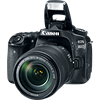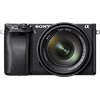Main
Model
Price
Advantages
launch
Announced
Body type
Camera subcategory
Sensor
Effective pixels
Max resolution
Sensor size
Sensor type
Processor
Image ratio w:h
Sensor photo detectors
Other resolutions
Image
ISO
Boosted ISO (maximum)
White balance presets
Custom white balance
Image stabilization
Uncompressed format
JPEG quality levels
Photography features
Minimum shutter speed
Maximum shutter speed
Aperture priority
Shutter priority
Manual exposure mode
Subject / scene modes
Built-in flash
Flash range
External flash
Continuous drive
Self-timer
Metering modes
Exposure compensation
Flash modes
AE Bracketing
WB Bracketing
Screen / viewfinder
Articulated LCD
Screen size
Screen dots
Touch screen
Screen type
Live view
Viewfinder type
Viewfinder coverage
Viewfinder magnification
Viewfinder resolution
Videography features
Resolutions
File Format
Videography notes
Microphone
Speaker
Optics & Focus
Autofocus
Manual focus
Number of focus points
Lens mount
Focal length multiplier
Digital zoom
Physical
Weight (inc. batteries)
Dimensions
Environmentally sealed
Battery
Battery details
Battery Life (CIPA)
Storage
Storage types
Connectivity
USB
HDMI
Microphone port
Headphone port
Wireless
Wireless notes
Remote control
Other features
Orientation sensor
Timelapse recording
GPS
Samples
Videos
Summary
The Alpha a6300 is equipped with larger sensor than the EOS 80D: APS-C (23.5 x 15.6 mm) versus APS-C (22.5 x 15 mm). It is very important advantage of this model because big sensor allows the camera owner to produce photos of the better quality. The Alpha a6300 has a wider ISO range of 100-25600 than 100-16000 ISO range of the EOS 80D. This ISO range let you to produce good quality photos in more difficult situations. The Alpha a6300 has more number of white balance presets - 10. This option gives the camera owner more control over colour. The Alpha a6300 provides more focus points than the EOS 80D: 425 vs 45. More number of focus points means more convenience while attempting to focus on objects which are not centred.
The EOS 80D has articulated display which will let the camera owner to make high quality selfie photos. The EOS 80D display is better as it has more screen dots 1,040,000 in comparison to 921,600 dots of the Alpha a6300 screen. The higher dot count display is better for reviewing images on your camera. The EOS 80D is produced with a touch screen. The EOS 80D offers better fastest shutter speed - 1/8000 second.
The EOS 80D battery life is better in compare to the Alpha a6300 battery life. According to CIPA standards you will be able to capture 960 photos with the EOS 80D and only 400 with the Alpha a6300. The Sony Alpha a6300 weighs 404g which is 326g lighter in comparison with the weight of the EOS 80D.
The EOS 80D and the Alpha a6300 have the same number of pros though as the Sony Alpha a6300 has larger sensor which is a very important advantage then this model becomes the best buy.


